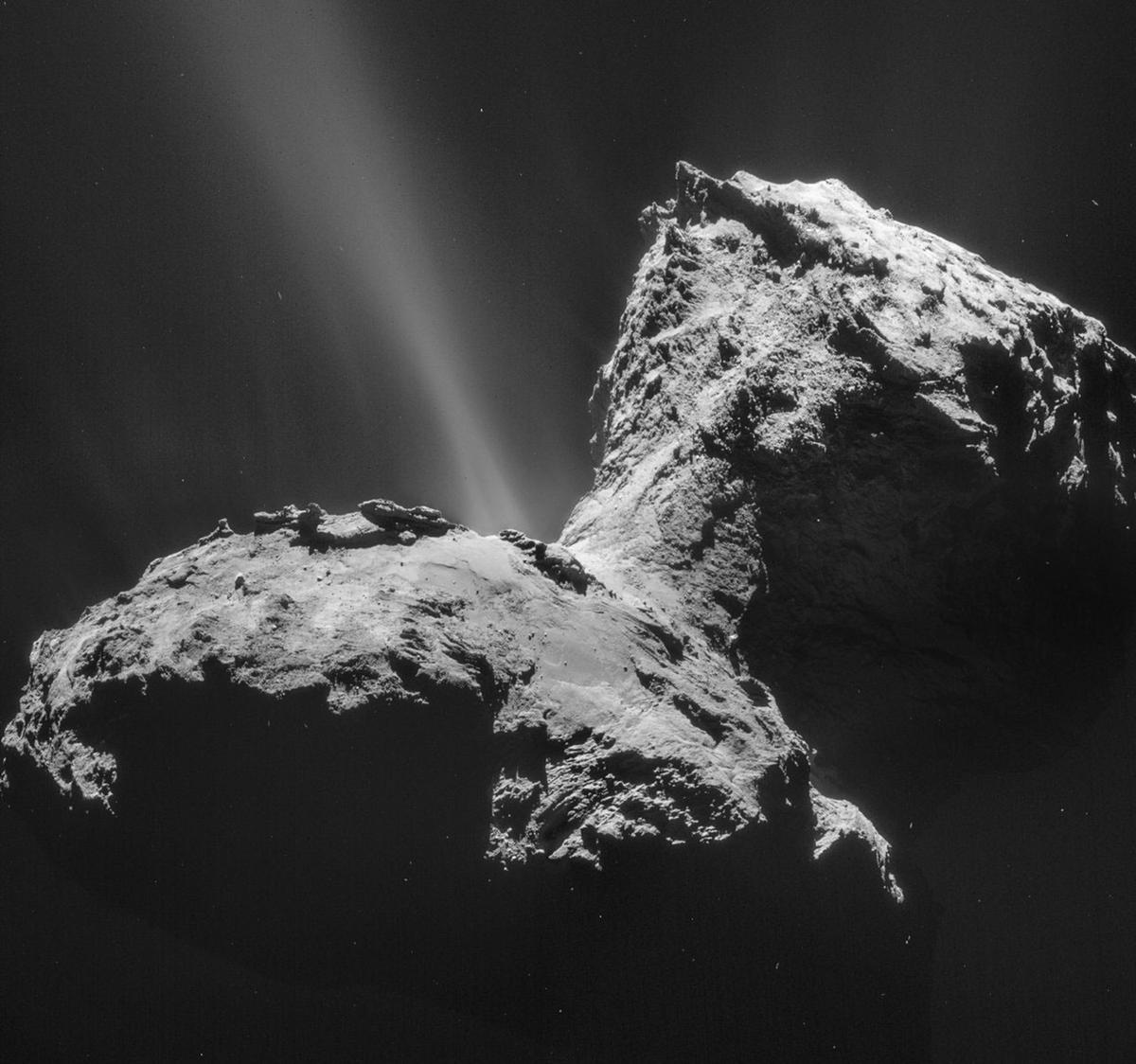Science
Comets and asteroids are remnants of the creation of the Solar System. Asteroids mostly occur in the asteroid belt between Mars and Jupiter, where debris has been trapped under the influence of Jupiter’s gravitational field and combined to form rocky clumps, known as asteroids. Comets on the other hand are not just made up of rocks and metals, but are known as "dirty snowballs". They contain a large amount of frozen materials, mostly H2O, CO2 and CO. As a comet approaches the Sun, the ices start to sublime, creating a cloud around the nucleus, known as the coma. While the nucleus is usually only a couple of kilometers in diameter, the coma can reach diameters of millions of kilometers. As the ices sublime, they also carry dust from the surface with them, the dust particles then get pushed away from the nucleus under the influence of radiation pressure, thus forming the curved dust tail. The second tail, which points in the radial direction away from the sun, is caused by the solar wind ionizing gas molecules in the coma, thus creating a plasma tail, which is usually dimmer than the dust tail.

The mission’s primary science goal is to characterise, for the first time, a dynamically-new comet or interstellar object, including its surface composition, shape, and structure, the composition of its gas coma. A unique, multi-point ‘snapshot’ measurement of the comet- solar wind interaction region is to be obtained, complementing single spacecraft observations made at other comets.
To investigate the internal composition of comets, the University of Bern is also involved in in-situ research propositions such as SUBICE.
